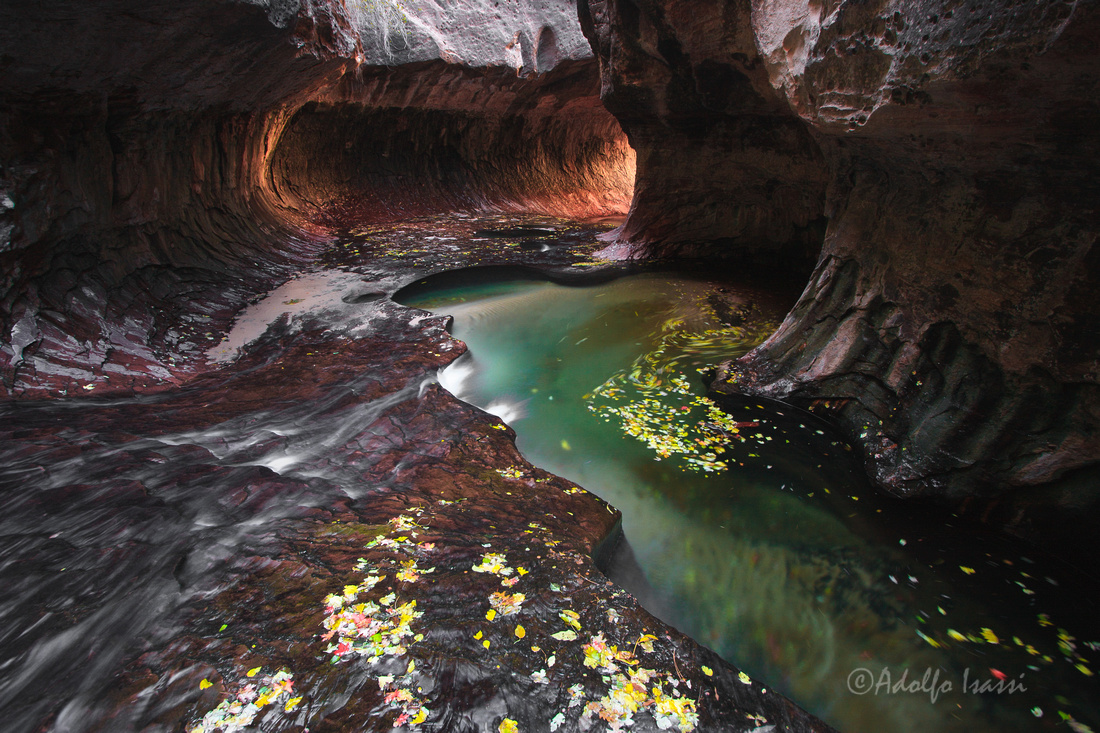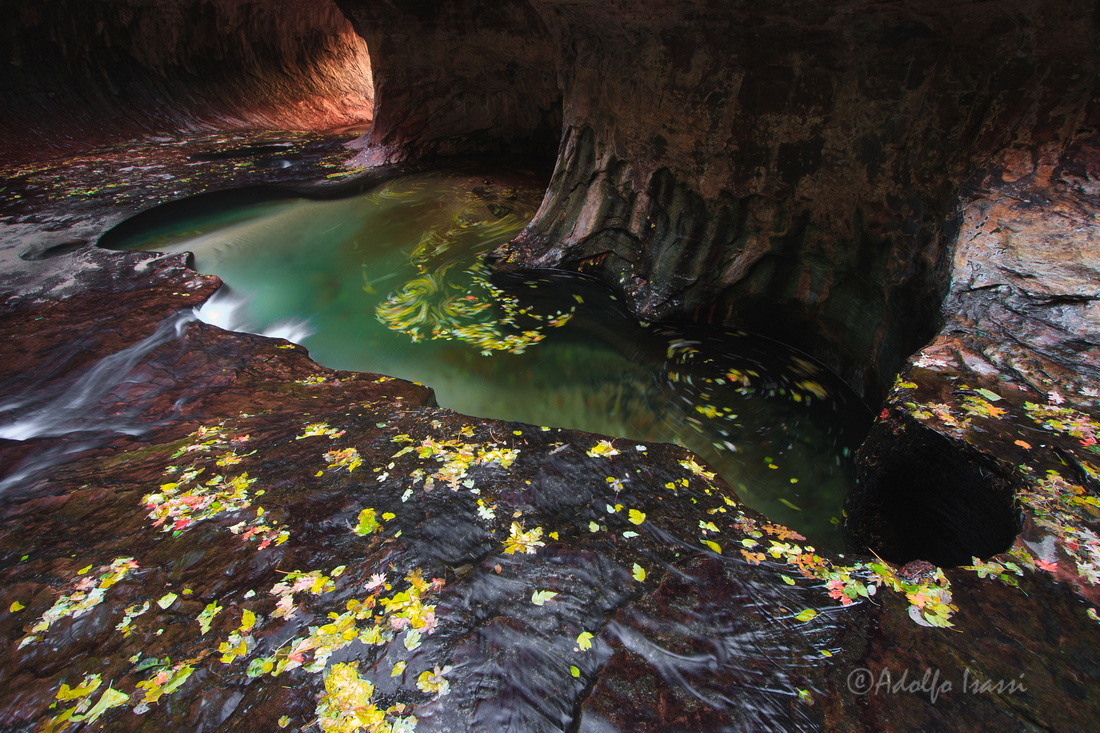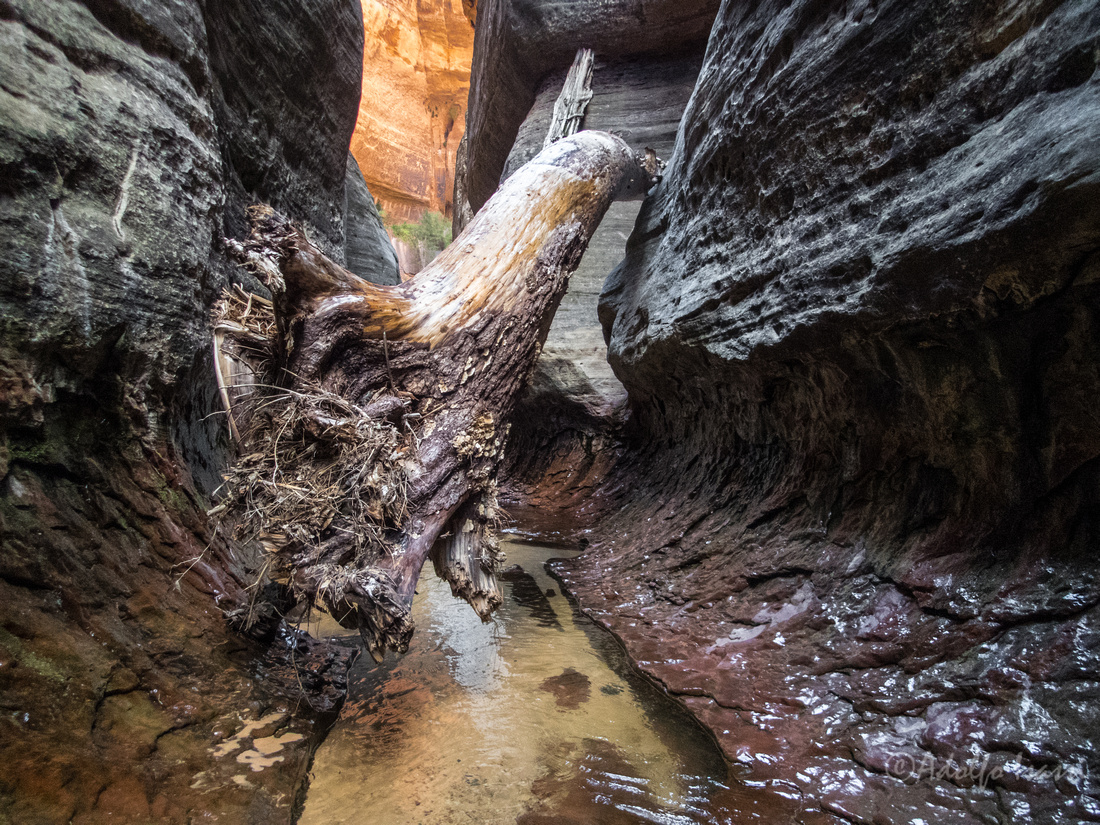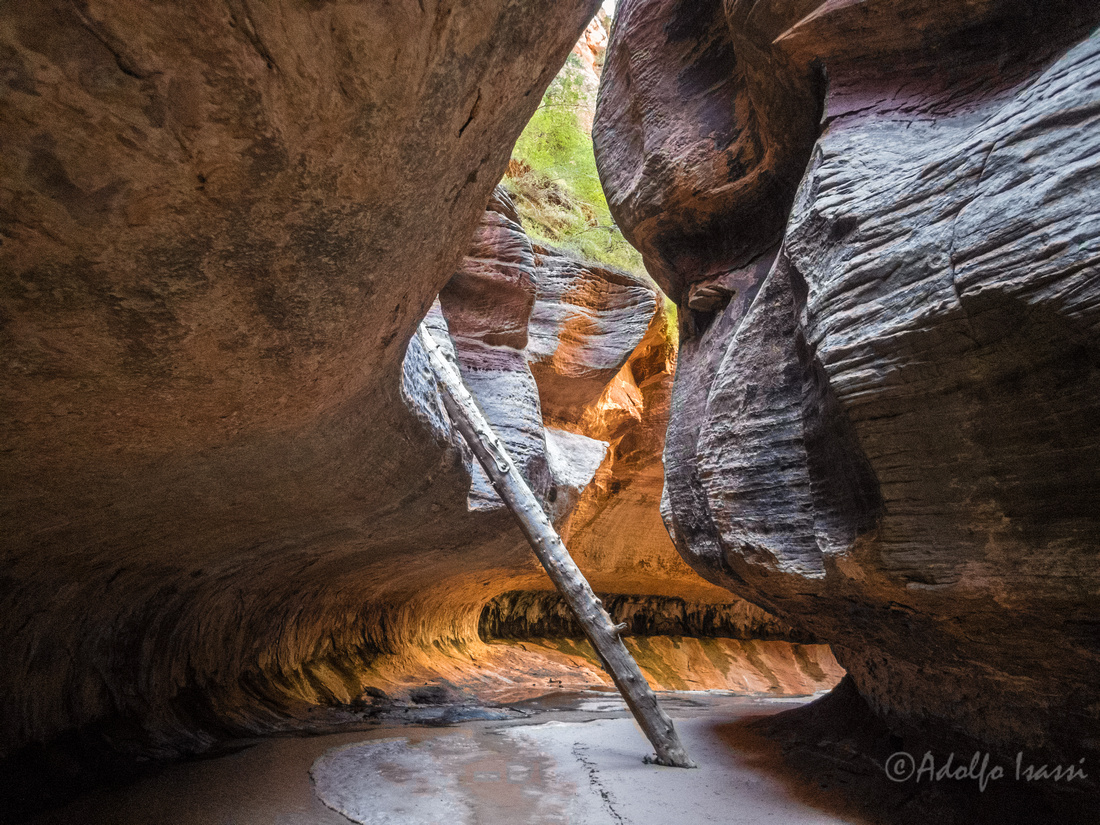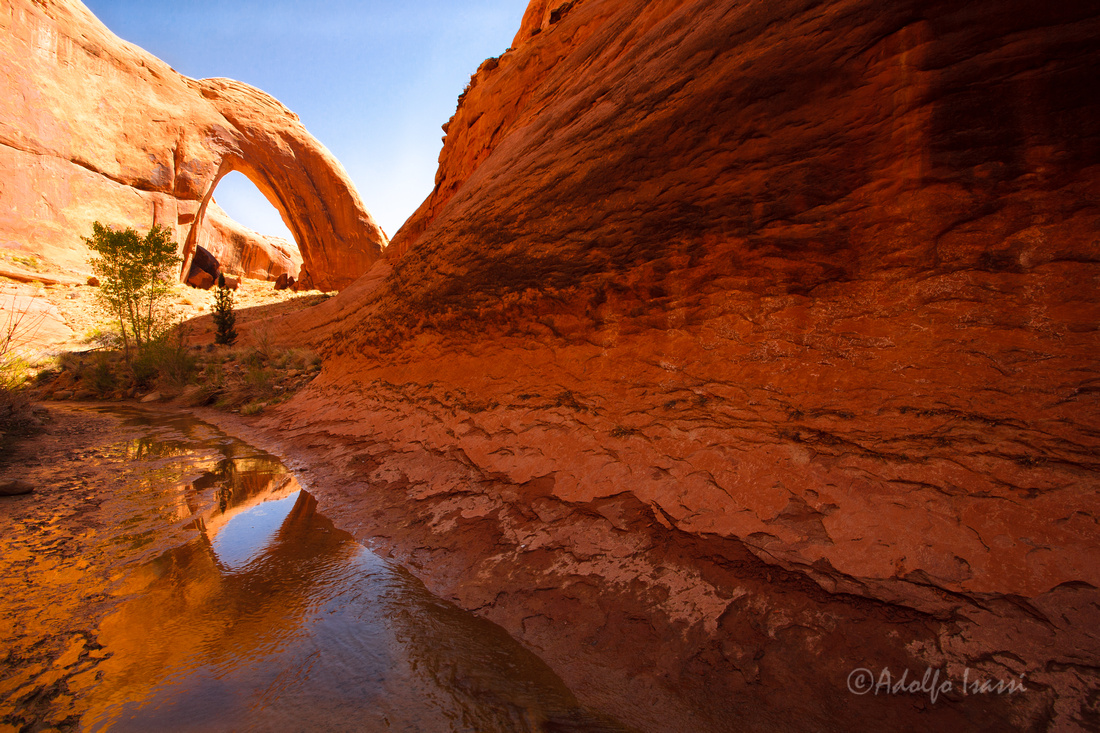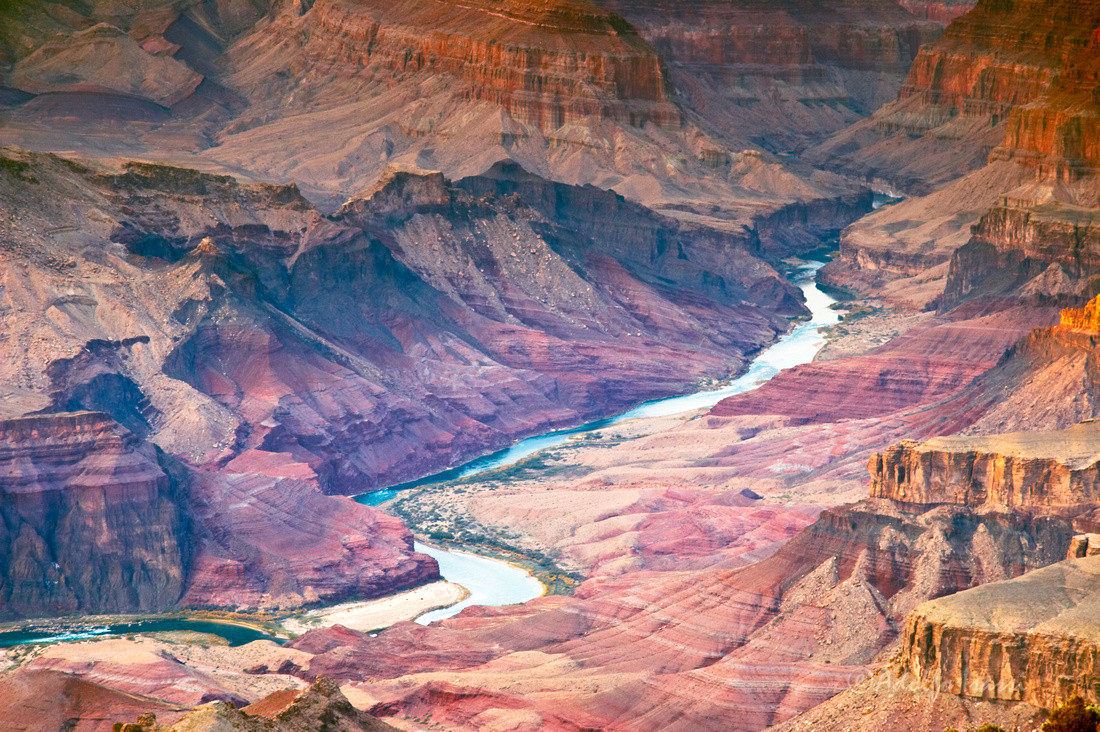Notes on Photography
Story Behind the Photo: The Subway
The Subway
The "Subway", that famous route in the north-west side of Zion National Park. As I watch the selection of Subway photos for this collection, I am not sure on what to make the focus of this blog entry. The beauty of the place? How it has become bureaucratically harder to access this place? How photography has been contributing to love and destroy gems like this.
This is an incredibly beautiful place. The entire route is beautiful, but at its middle point, there is about a half a mile of stunning water bored passages that ignite our Victorian fascination with "odd" rock formations. I was lucky enough to be able to do my first hike of this route in 2010, when there was no rigmarole lottery system to obtain a permit to access this place. I hiked the route two times in two weeks, and both times, all I did was walk to the backcountry permit desk and get a permit. Not even a waiting line. I do realize that the new and increasingly restricting permit system is probably a good thing. Otherwise the crowds will just destroy the place.
Talking about crowds...it does not take much people to crowd a place like this. In my two forays to photograph this place, I encountered small number of photographers hogging the best spots for....hours! This is, in part, the reason I had to come back a second time, with this in mind, to get the shots that I wanted. In essence, the first hike ended being a scouting trip for best time of the day for light, and getting there early enough to stake a spot.
Blur
I chose a late month in the year with the hope of getting some foliage color in the mix. Early November turned to be the ticket. At this time of the year, the hours between 11AM and 1PM were the best to catch the bounced light on the tunnel like walls of the Subway. There is a narrow ledge that offers the best POV for these shots. The ledge probably accommodates 7 to 10 photographers, depending on how much people are willing to invade each other's space. If you get there late, say 9, 10 am all the spots are taken. The second day, I started my hike early still in the dark, and I got there when only one other photographer was already staked on the 'optimal' spot.
Later on post-production, I realized that the first day, when I was 'late', the situation forced me to get-creative with compositions and points of view. Another unexpected positive experience, was that with the shoulder-to-shoulder long wait, I made a couple of photography buddies, and learned some tricks. The guy next to my left was shooting with a large format camera. It was a learning experience watching him operate his rig. Another photographer came equipped with a dry-suit to submerge himself neck deep in water and take water surface level shots.
Unique S composition
The low light in this tunnel like chamber, results in low shutter speeds. This produces beautiful water blurs easily, without the need for Neutral Density filters. A visual bonus results when yellow leaves falling from the trees atop the canyon travel on the water current and produce interesting yellow streaks. It was interesting to witness photographers farming leaves form outside the tunnel to contrive this effect.
After 2010, I came back a couple of times. These times from the 'top' of the route. This part of the route gives you access to a couple of places that are famous and staple icons of American Southwest photography.
The ever changing conditions of nature
Story behind the photo: Cottonwood Storm
Escalante holds a special place in my heart. The "Grand Staircase Escalante National Monument" is huge, and even after 5 years I have not finished exploring all of it. The exploration or this area has marked a drastic increase on my appreciation and understanding of the American Southwestern Wilderness.
Before moving to Utah, I made my pilgrimage to Escalante twice a year on Spring and Fall. I would pour over maps and books, mainly Steve Allen's Canyoneering books, and plan hikes and photography destinations in the area. In the spring of 2013 I decided to explore Willow Gulch. During that morning, as I walked down the canyon, the walls soared higher, water ran deeper and cottonwood trees started to become prominent in the canyon floor. Cottonwoods or "Populus deltoides" (botanical name) they belong to the poplar family with other poplars like quaking aspen and Lombardy poplar.
I stopped to filter and re-fill my water bottles when a sudden wind blew through the canyon. As the wind blew through the cottonwood trees, the canyon air became engulfed with these fluffy cotton balls. This cottony material causes the small whitish cottonwood seeds to float on the wind for long distances.
It was a wonderful unexpected spectacle. I got my camera out and enjoyed the event for several minutes.
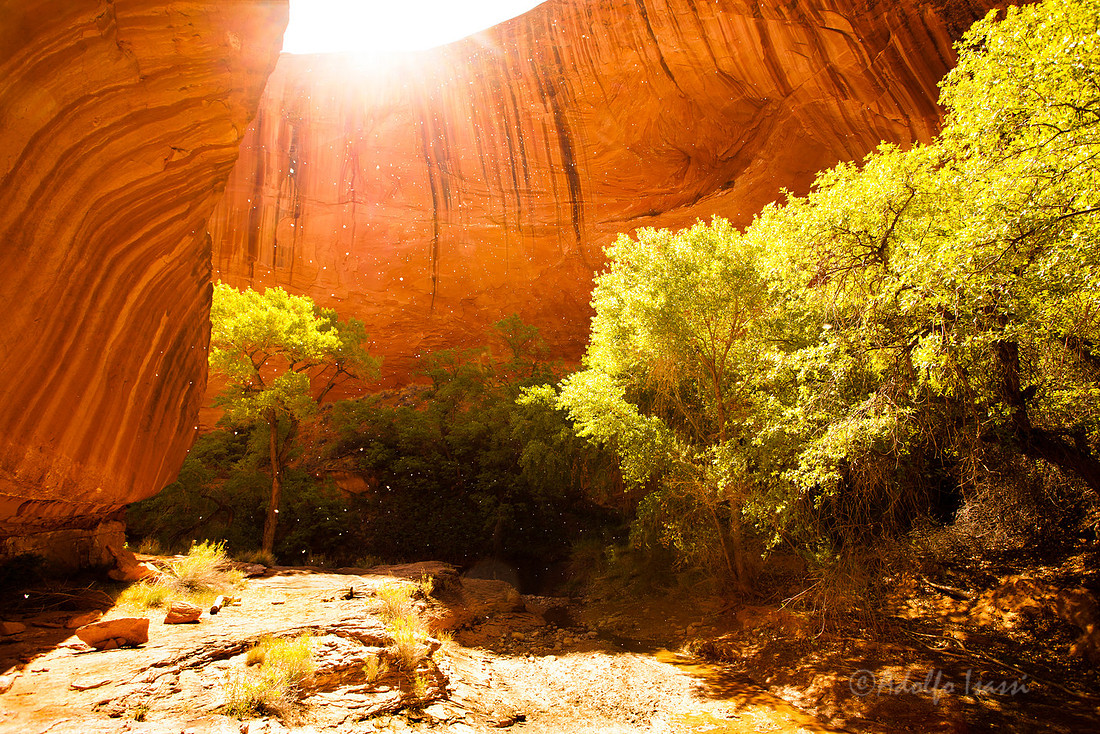
 Cottonwood Storm from the Canyons Collection
Cottonwood Storm from the Canyons Collection
Broken Bow Arch from the Canyons Collection
Story behind the photo: Grand Canyon Shots
Molted light affords me an otherwise not advisable centered composition highlighting and framing the subject: Bright Angel Trail leading to the Colorado via Indian Gardens.
In 2005, I took a photo expedition to the Grand Canyon and I was overwhelmed. In later years I came back a handful of times for more. The Grand gave me a ton of lessons over the years on landscape photography. Here I share some.
The Grand Canyon is a tough photographic subject in many respects:
Usually in landscape photography, finding a "Point Of View" (POV) is a fairly hard task. Particularly if searching for a unique fresh point of view. The Grand Canyon, especially the south rim, has been photographed to death. So, stay away from the rim sidewalk where your tripod and a million other tourists will take the same shot....most likely behind your shoulder with their crappy camera phone...or a selfie with you bent over your tripod as the background.
Next. Lets say that you stay away from the rim sidewalk, you scout some spots. Lets say you even used some software application like "The Photographer’s Ephemeris" to study the light at a particular location at a particular time of the year. You stake your tripod and wait for the light, you take 20, 30, 40, 50 photos and yet somehow none of them capture the grandeur that lays before your eyes.
In think that the singular most important and creative decision a photographer makes is what to leave out of the frame. This is the next challenge in a place like the Grand Canyon. Every grand view looks so amazing, how to decide what to leave out? What to leave in? What is the focal point of the photograph?
For a place like the Grand Canyon, your sense of composition needs to be dialed up and attune with many elements all at once: Light direction, shadows, horizon placement, sky conditions, major elements in the composition, dominant lines, frame ruptures, the list goes on...
On the field, usually there is not enough time to sweat all these factors. Sun and clouds moves fast, conditions change, so all you can do is sharpen your compositions skills so they become second nature.
Diagonal composition of the Colorado River bisecting the Grand Canyon
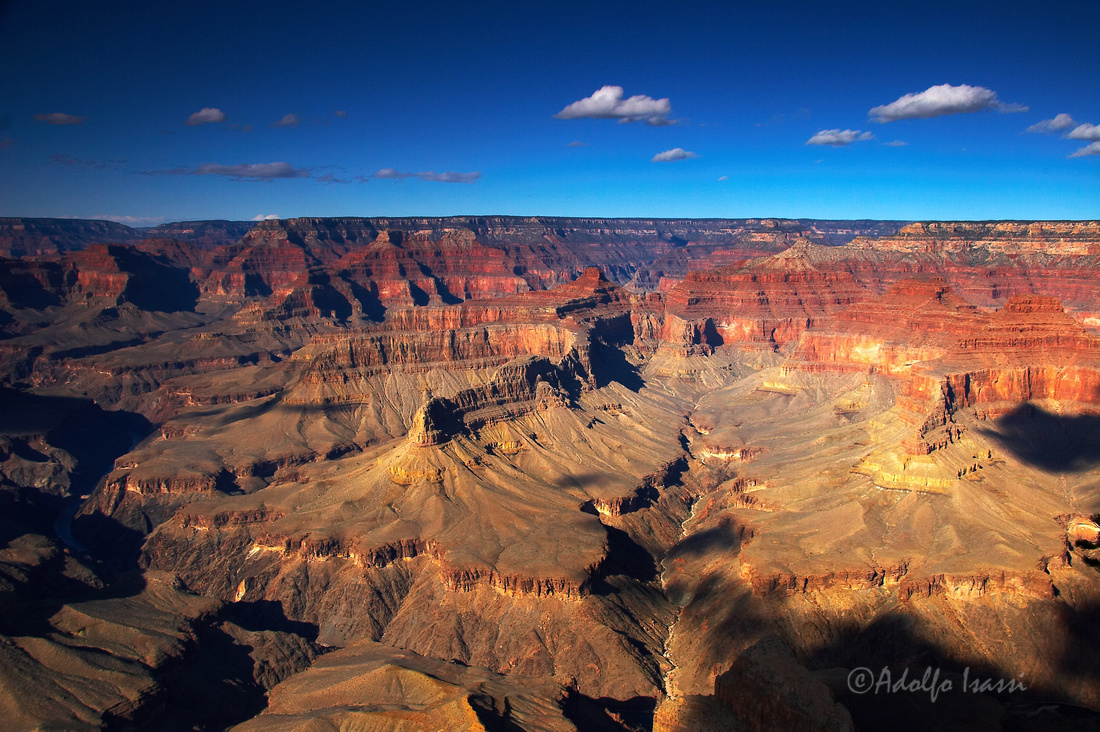
 Upper third horizon placement leaves ample composition space for the eyes to enjoy the rugged universe of the Grand Canyon
Upper third horizon placement leaves ample composition space for the eyes to enjoy the rugged universe of the Grand Canyon
After you are done and satisfied with some of your shots, how will you know if your photographic work in the Grand Canyon is...unique? offers a new point of view? Chances are you will never know....but if you are in for the long haul, get past the Ansel Adams stuff and get acquainted with the the work of the major landscape photographers that have dedicated part, or all of their time to the American Southwest: Fatali, Ilk, Dykinga, D. Muench, M. Muench, Wolfe, Rowel, Cornish, Buselle, K. Duncan, Everton, to mention some. As you become more familiar with their work, you will make more informed decisions on your own body of work.
Even if you do not come with groundbreaking images....the Grand Canyon will teach you tons about composition.
I close this post with one of my favorites quotes from one of my favorite art authors:
A truism from the experience of many landscape photographers: One does not for long wrestle with the view camera in the wind and heat and cold just to illustrate a philosophy. The thing that keeps you scrambling over the rocks. risking snakes, and swatting at the flies is the view. It is only your enjoyment of and commitment to what you see, not to what you rationally understand, that balances the otherwise absurd investment of labor.
--Robert Adams
Story behind Little Colorado River Gorge No 68
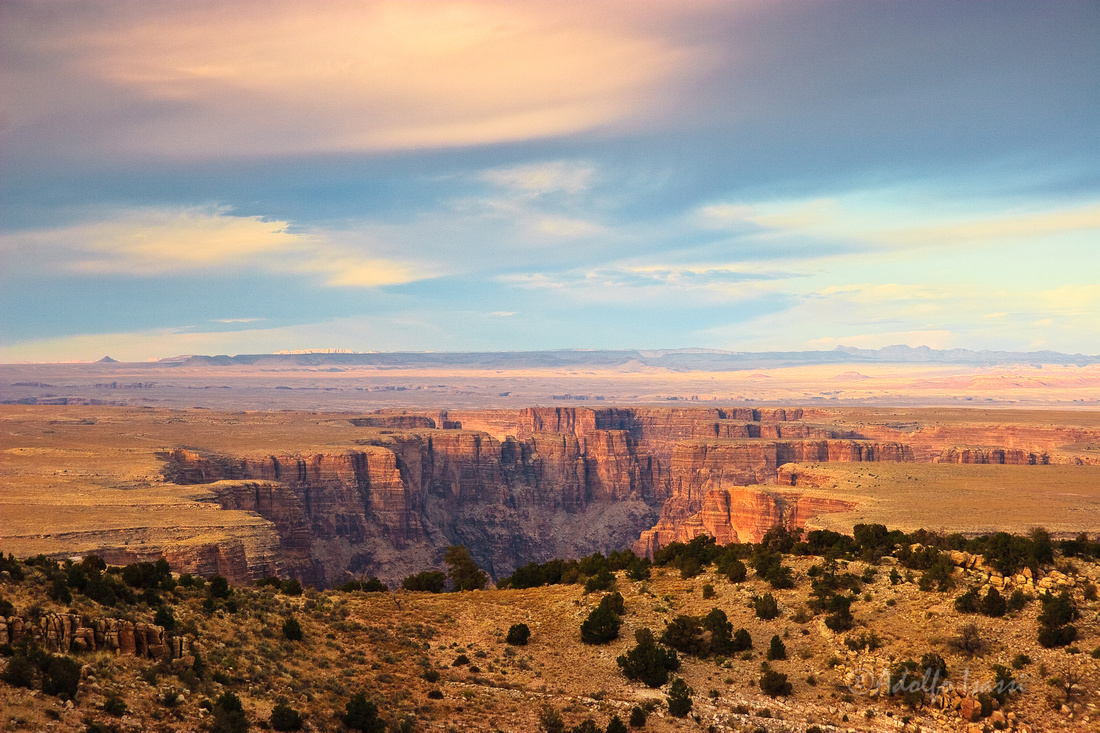

This is one of the earliest shots from the "Canyons of the Southwest" collection. It was taken during November 2005. The objectives from that particular expedition was to concentrate on the South Rim of the Grand Canyon, and other minor canyon around the Kayenta area.
One of the lessons from that trip is that the Grand is so...enormous, that 'atmosphere' becomes the subject of your image. Here, in this image of the Little Colorado River Gorge, you can almost 'feel' the soft light traveling through the air rendering the landscape in the warm tones of the "Golden Hour"....that precious hour of light before/after the sun touches the horizon at sunset or sunrise....before it turns -blue- and into the "Blue Hour".
While traveling from Kayenta to the South Rim, I realized that I wold hit this scene at the Golden Hour, so with anticipation, I scouted for the desired point of view. I shoot through the hour and back at home, I selected this particular shot, where there is still blue in the sky, before everything becomes a "golden bath" that drowns everything. I love how you can see the brush in the foreground, the canyon walls in a slight purple, and the cliffs in the far distance.
This shot belongs to what in retrospect I see as my "Golden Hour" seeking years, and marked a path that would lead me closed and deeper into canyons.
Technical details:
The secret life of Canyons
What is it about this type of canyons?
Around 2011, my approach to landscape photography took a drastic detour. After years of covering, and re-interpreting iconic landscapes, I felt the void and need to move into deeper places. Places that required a..."technical passport", in the form of harness, ropes, knots, climbing and canyoneering gear.
As I acquired the skills, I also had to adapt my photographic gear. Huge DSLRs with multiple lenses was no longer a sane option to take down these places. The years that I spent refining my knowledge of optics and exposure proved invaluable in the choosing of new gear and how to use it under adverse environments (water and sand) and adverse light conditions.
The rewards have been very sweet.
I will have to admit, that for a time, the descents into these places were to exhilarating, that I thought: "Who cares about photography? - I do not want to interrupt this moment".
But eventually, the other side of the coin shows up: "I do not want to forget this".
So, what is it about these canyons?
They are beautiful, but hidden. They are dangerous, yet they call you in. But most of all, somehow they make you feel more...alive.
